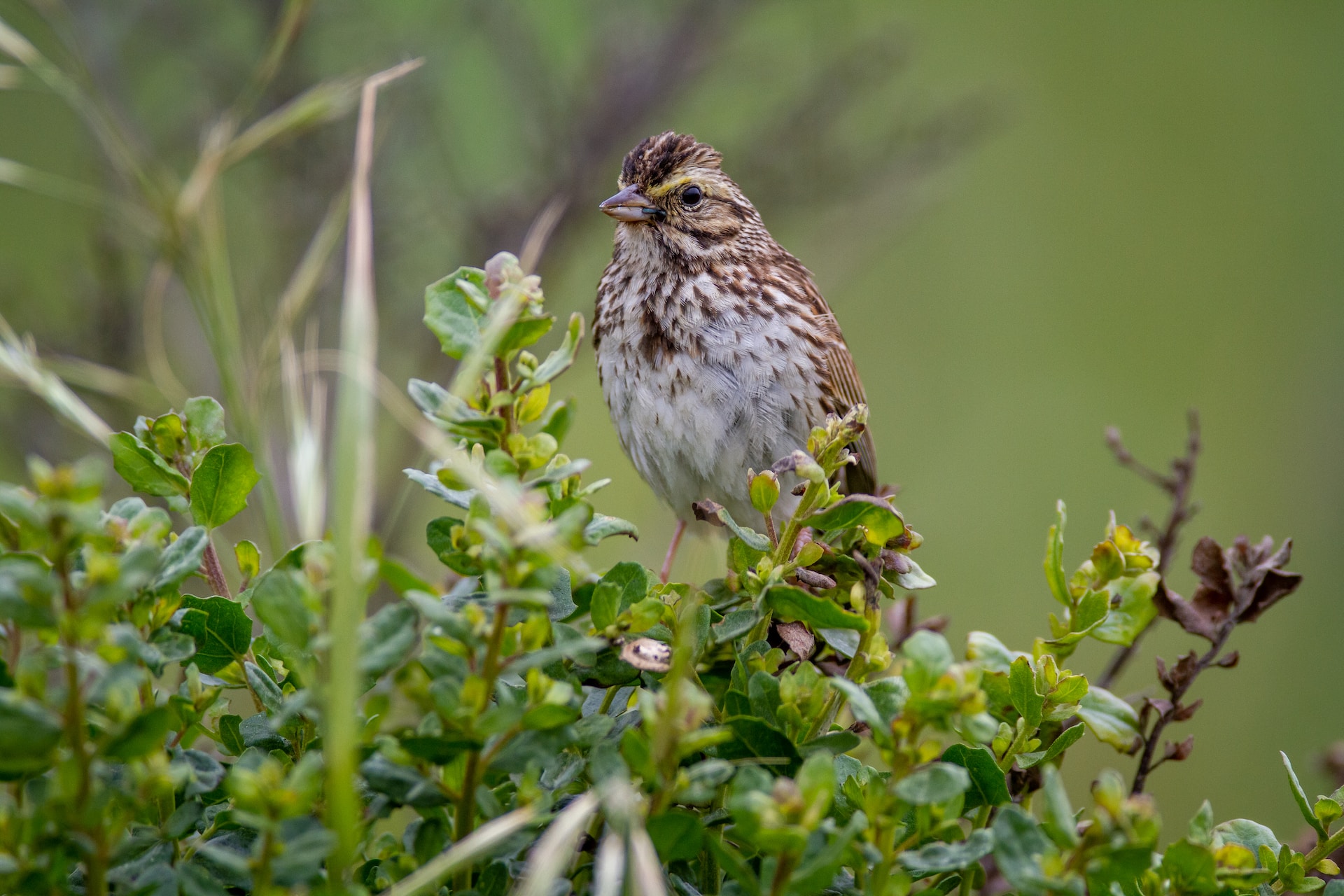Cracking the code: Why songbirds are larger in colder climates
Scientists, including those from UBC forestry, use genome sequencing to find out.

Photo credit: Matt Bango/Unsplash
Local adaptation may protect songbirds against climate change
Scientists have unlocked the genetic basis underlying the remarkable variation in body size observed in song sparrows, one of North America’s most familiar and beloved songbirds. This discovery also provides insights into this species’ capacity to adapt to the challenges of climate change.
The study, published today in Nature Communications, used genomic sequencing to successfully pinpoint eight genetic variants, or DNA mutations, largely responsible for the nearly threefold difference in body size observed across the song sparrow range from Mexico to Alaska. For instance, song sparrows that live year-round in the Aleutian Islands can be up to three times larger than their counterparts in the coastal marshes of California.
Katherine Carbeck, the study’s first author and a PhD candidate in the faculty of forestry, University of British Columbia, explains that body size varies predictably in many species that inhabit vastly different climatic conditions, aligning with “Bergmann’s rule” which states that organisms in cooler climates tend to be larger as an adaptation to regulate body temperature.
“The existence of ‘locally adapted’ populations implies that natural selection has shaped the genetic makeup of song sparrow populations across their range, enabling individuals to survive and reproduce in drastically different climatic conditions,” said Carbeck. “However, the genetic mechanisms underlying Bergmann’s rule have remained elusive until now.”
Whole-genome sequencing cracks the code
Carbeck and colleagues from the Cornell Lab of Ornithology, University of Alaska and Ouachita Baptist University used the power of whole-genome sequencing to decode the entire song sparrow genome and unlock its secrets.
They combed through genetic samples from the two largest song sparrow subspecies that live year-round in the Aleutian Islands, as well as two smaller subspecies: one that breeds in Alaska but migrates to warmer sites in winter, and one that lives year-round on the B.C. coast, where the Pacific Ocean maintains comparatively mild winter weather.
Their comparison of the larger and smaller-bodied subspecies revealed several candidate genes associated with body mass. By characterizing these candidates, they identified eight specific genetic variants closely linked to body mass—aligning with Bergmann’s rule.
Genetic diversity helps life adapt to climate change
The researchers suggest that revealing a genetic basis for Bergmann’s rule helps us to understand how evolution, natural selection and climate have interacted throughout a species’ history.
“Our results highlight the potential role habitat conservation plays in enabling the continued exchange of genes between populations — which is important in the face of ongoing change,” said Carbeck.
Dr. Jen Walsh, a study co-author and research associate at the Cornell Lab of Ornithology, added: “From a genomic perspective, identifying a small number of candidate genes with an apparently large impact on variation in body size is really interesting. The magnificent range of phenotypic diversity seen in song sparrows suggest they offer exciting opportunities to identify genes underlying a host of well-known and generally accepted eco-geographic rules.”
Dr. Peter Arcese, a co-author and a professor in UBC’s department of forest and conservation sciences, said the findings suggest a resilient future for these birds.
“Our findings imply that some, if not all, locally adapted song sparrow populations may continue to adapt to climate change, as long as we maintain habitat conditions that facilitate the movement of individuals and genes between populations,” he said.



